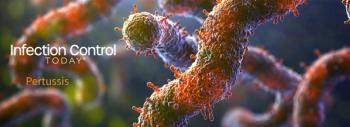
Why is Precleaning a Critical Role in Medical and Dental Instrument Care?
Infection prevention begins long before sterilization. In fact, it starts the moment a medical or dental instrument leaves a clinician's hands. Precleaning, also known as point-of-use cleaning, is the essential first step in effective decontamination and infection control. This critical process helps remove biological debris before it hardens, reduces microbial load, protects instrument surfaces, and supports compliance with infection prevention guidelines.
In health care and dental settings, every moment counts in preventing cross-contamination. Precleaning ensures that subsequent cleaning, disinfection, and sterilization steps perform optimally, creating a safer environment for both patients and staff.
Why Precleaning Matters
During use, instruments are exposed to blood, tissue, saliva, and other biological materials. Within minutes after use, these contaminants begin to dry, adhere, and harden on surfaces. Once this occurs, cleaning becomes exponentially more difficult, and any remaining residue can shield microorganisms from sterilization.
Incomplete or delayed cleaning compromises the entire decontamination chain. Studies have shown that residual organic matter, even in microscopic amounts, can harbor bacteria and viruses that survive sterilization cycles. Precleaning disrupts that risk by loosening and removing debris before it becomes stubbornly attached.
Effective precleaning helps to:
• Loosen and remove gross contaminants before they can dry.
• Reduce bioburden, or the number of microorganisms present on an instrument.
• Protect delicate instrument surfaces from corrosion and pitting.
• Support adherence with infection prevention guidelines set forth by the CDC, Association for the Advancement of Medical Instrumentation (AAMI), American Dental Association (ADA), and other regulatory authorities.
Without this step, even the most advanced washer-disinfectors and autoclaves cannot perform optimally. In short, precleaning is not a luxury; it is a necessity.
The Science Behind the First Step
Precleaning is designed to begin the decontamination process immediately after a procedure, often right at the point of use. The goal is not to sterilize the instrument, but to prepare it for effective cleaning by removing soils that can obstruct detergents and disinfectants.
Modern precleaning products are formulated with enzyme-based chemistry that targets and breaks down the main components of biological debris, such as proteins, fats, and carbohydrates. These enzymes act like molecular scissors, breaking down complex organic materials into smaller, water-soluble fragments that can be easily rinsed away later.
By applying a fine mist of enzymatic spray or using a presaturated wipe, technicians can keep instruments moist and protected until they reach central sterile processing (CSP). This step prevents debris from hardening and reduces the effort needed in later stages, ultimately saving time and lowering reprocessing costs.
Tools and Techniques
Precleaning can be performed using a variety of specialized products, including:
• Enzymatic Sprays and Foams: These fast-acting solutions are applied directly onto used instruments immediately after a procedure. They begin breaking down biological debris on contact and keep instruments moist during transport to the decontamination area.
• Presaturated Wipes: Ideal for smaller instruments, dental handpieces, and items that cannot be submerged, wipes offer a convenient way to manually remove visible soils at the point of use.
• Enzymatic Sponges and Soaking Pads: These products deliver gentle mechanical action to remove residue from delicate or complex surfaces while protecting the instrument’s finish.
The key is timing. Precleaning must be done immediately after use, before contaminants dry and adhere. Even delays of 15 to 30 minutes can make cleaning significantly more difficult.
Additionally, using products designed with material compatibility in mind ensures that stainless steel, aluminum, plastics, and rubber components are not degraded or corroded during the process. The best precleaning solutions combine effective soil removal with nonabrasive, neutral pH formulations that preserve instrument integrity.
Protecting Instruments and the People Who Use Them
The benefits of proper precleaning extend far beyond infection prevention. When instruments are precleaned promptly and effectively, they stay in service longer, perform more reliably, and require less aggressive cleaning later. Corrosive debris such as blood, tissue, and saline can etch or pit metal surfaces if left unchecked, leading to premature wear, loss of precision, and costly repairs or replacements.
Precleaning also helps reduce one of the most common yet overlooked risks in the decontamination process, the hazards associated with rigorous manual scrubbing. When biological soils are allowed to dry on instruments, technicians must often resort to vigorous brushing or abrasive methods to remove hardened debris. This process increases the risk of scratches, surface damage, and dulling of cutting edges, compromising both the performance and sterility of instruments. Even micro-abrasions on stainless steel can create crevices where microorganisms can hide, making future cleaning more difficult.
By keeping instruments moist and partially decontaminated from the outset, precleaning minimizes the need for such harsh mechanical effort. Enzymatic sprays, foams, and presoak solutions begin to dissolve proteins, lipids, and carbohydrates on contact, softening and lifting organic material before it has a chance to harden. When instruments reach the central sterile processing area, soils are easier to rinse or gently brush away, significantly reducing both cleaning time and physical strain on staff.
Reducing Worker Exposure and Injury
Precleaning also plays a vital role in occupational safety. Manual scrubbing of contaminated instruments exposes technicians to potential sharps injuries, splashing, and aerosolized contaminants. Instruments that have been pretreated with enzymatic cleaners or kept moist during transport are far safer to handle because debris is softened and less adherent, reducing the need for forceful manipulation.
When less scrubbing is needed, the likelihood of needlestick injuries or contact with infectious materials decreases dramatically. This is particularly important in high-volume surgical or dental settings where turnover is fast, and staff may handle hundreds of instruments daily. Using precleaning products as part of a standardized workflow not only safeguards personnel but also improves ergonomics by reducing repetitive motion and hand fatigue.
A Smoother, Safer Workflow
The benefits extend beyond safety. A well-designed precleaning protocol streamlines the entire instrument reprocessing cycle from the procedure room to the decontamination area and finally to sterilization. Instruments that arrive already treated with an enzymatic spray or moist wipe are easier to sort, clean, and inspect, enabling faster throughput and reducing bottlenecks in sterile processing.
By minimizing mechanical scrubbing, facilities also reduce wear on cleaning brushes and equipment, while preserving the smooth finishes and sharp edges that make precision instruments effective. Over time, this leads to fewer repairs, replacements, and interruptions in clinical operations.
In short, precleaning transforms a potentially hazardous, labor-intensive process into a safer, more controlled, and more predictable workflow. It protects the value of expensive instruments, the well-being of the staff who handle them, and the patients whose care depends on them.
Using the right precleaning products and techniques creates a safer, more efficient continuum from the operating or dental suite to the sterile processing department. It is a small investment that delivers long-term protection for instruments, staff, and patients alike.
Regulatory Adherence and Best Practices
Health care and dental facilities are held to exacting standards for infection prevention, guided by agencies such as:
• CDC: Recommends cleaning instruments as soon as possible after use to prevent soil and debris from drying.
• AAMI: ST79 and ST91 standards emphasize the importance of precleaning and moisture retention during transport.
• ADA: Recommends immediate precleaning to ensure effective sterilization and compliance with Occupational Safety and Health Administration (OSHA) standards.
Facilities that implement standardized precleaning protocols not only maintain adherence but also reduce liability and enhance accreditation outcomes.
A knowledgeable cleaning fluid supplier can help facilities select products that meet both regulatory requirements and practical workflow needs, balancing cleaning efficacy, safety, and ease of use.
Integrating Precleaning into the Workflow
The most successful infection prevention programs treat precleaning as a team responsibility, not an afterthought. Staff should be trained to perform point-of-use cleaning consistently and correctly using approved products.
A typical workflow might include:
1. Immediate Precleaning: Apply enzymatic spray or wipe debris from instruments immediately after use.
2. Containment and Transport: Keep instruments moist during transfer to the decontamination area using covered trays or sealed bags.
3. Manual or Automated Cleaning: Use compatible detergents and water temperatures to complete soil removal.
4. Inspection and Sterilization: Check instruments for cleanliness before disinfection or sterilization.
This systematic approach ensures that every instrument reprocessed in the facility meets the highest standard of cleanliness and safety.
Extending the Life of Precision Instruments
High-quality surgical and dental instruments are a significant investment. Proper precleaning helps protect that investment by preventing damage caused by dried debris, chemical corrosion, and improper handling.
By keeping instruments free of hardened soils, healthcare facilities can maintain sharp edges, smooth joints, and precise functionality for years of use. This not only reduces replacement costs but also improves patient outcomes through more consistent instrument performance.
In an era where sustainability and cost-efficiency are increasingly important, effective precleaning offers both clinical and economic advantages.
Partnering for Success
Choosing the proper cleaning solution is as important as the process itself. Partnering with a knowledgeable, research-driven supplier ensures access to precleaning products that deliver:
• Proven enzymatic activity for effective organic soil removal
• Compatibility with a wide range of instrument materials
• Ease of use for staff in both clinical and reprocessing settings
• Compliance with environmental and occupational safety standards
Such collaboration supports a dependable foundation for infection prevention and operational excellence.
Final Thoughts
Precleaning is the critical first step that determines the success of all subsequent phases in instrument reprocessing. By removing organic debris before it hardens, reducing microbial load, and protecting both instruments and personnel, it lays the groundwork for effective disinfection and sterilization.
When facilities invest in quality precleaning products and staff training, they strengthen their infection control programs from the ground up. In this way, patient safety, regulatory compliance, and instrument longevity all begin with one decisive action, a thorough, well-executed precleaning process. When infection prevention starts with a strong first step, everything that follows becomes more effective and more dependable.
Newsletter
Stay prepared and protected with Infection Control Today's newsletter, delivering essential updates, best practices, and expert insights for infection preventionists.






